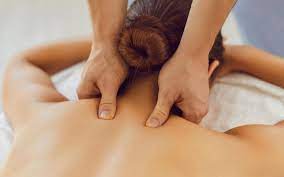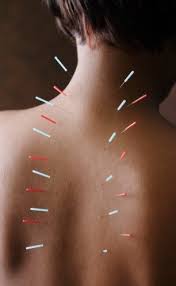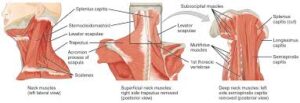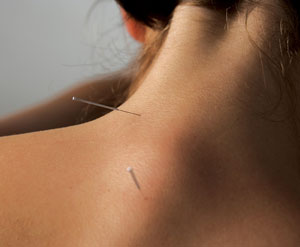

In our digital age, “forward head posture” (FHP) is something many of us are unintentionally developing.
As we stare down at screens for hours, the head naturally starts to lean forward, causing a domino effect on posture that can lead to neck pain, headaches, and even muscle tension across the shoulders and upper back.
But did you know that acupuncture, a practice rooted in ancient Chinese medicine, can help correct this very modern problem?
In this article, I shall discuss how acupuncture can realign forward head posture by addressing muscle tension, promoting energy flow, and restoring balance to the cervical spine.
We will cover the following:
Article Index
- Understanding Forward Head Posture
- How Acupuncture Targets Muscles and Energy Flow
- Key Acupoints for Posture Correction
- Real-Life Success Stories
- The Long-Term Benefits of Acupuncture for Posture
- Conclusion: Achieving Balance Through Acupuncture
Understanding Crane Neck Posture
Crane head posture occurs when the head juts out in front of the shoulders, creating an exaggerated curve in the cervical spine.
This misalignment puts significant strain on neck muscles and can cause other parts of the spine and back to overcompensate.
Forward head posture is often caused by prolonged screen time, poor ergonomics, or simply years of habit.
According to research from the Journal of Physical Therapy Science, forward head posture can lead to long-term issues, including reduced neck mobility and chronic pain.
Traditional treatments involve strengthening exercises, ergonomic adjustments, and physical therapy, but acupuncture is increasingly being recognized as a complementary approach for posture correction.
How Acupuncture Targets Muscles and Energy Flow?
In acupuncture, the body is seen as a system of energy channels, known as meridians, where energy or “qi” flows.
Misalignment, such as forward head posture, disrupts this flow and can lead to tension, stiffness, and pain.
Acupuncture for posture targets specific points along these meridians to release tension, reduce inflammation, and restore balance in the neck and upper back area.
Releasing Muscle Tension
Acupuncture works by inserting fine needles into specific points, triggering the release of neurotransmitters like endorphins and serotonin.
This helps relax tight muscles around the neck and shoulders, which are often overstressed in those with forward head posture.
A study in The Journal of Alternative and Complementary Medicine highlighted acupuncture’s effectiveness in alleviating muscle tension and promoting blood flow, essential for muscle relaxation and recovery.
Improving Energy Flow
From a traditional Chinese medicine perspective, posture issues like FHP are often due to stagnant or disrupted energy flow in the meridians, especially those running through the cervical spine and shoulders.
By inserting needles at key points along these pathways, acupuncture helps reestablish energy flow, allowing the muscles and spine to realign naturally.
Key Acupoints for Neck Posture Correction
Acupuncture for forward head posture involves targeting specific points that influence both the cervical spine and the shoulders.
Here are some key acupoints:
GB20 (Gallbladder 20): Located at the base of the skull, this point is used to relieve neck stiffness and headaches, common issues in people with FHP.
LI4 (Large Intestine 4): Found between the thumb and index finger, this point promotes overall relaxation, helping to relieve tension throughout the neck and shoulders.
SI15 (Small Intestine 15): Located along the shoulder blade, this point helps relieve tension in the upper back, essential for supporting neck posture.
GB21 (Gallbladder 21): Often used to release tight trapezius muscles, GB21 relieves shoulder tension, which in turn helps correct the head’s position.
Targeting these points stimulates the muscles around the neck, providing relief from tension and encouraging a more natural head and neck alignment.
Additionally, the American Journal of Chinese Medicine reports that acupuncture at these points has a calming effect on the central nervous system, further aiding in muscle relaxation.
Real-Life Success Stories
Let’s meet Jane, a software developer in her 30s who spent most of her workday looking at screens.
Over time, she developed a pronounced forward head posture and began experiencing frequent neck pain and tension headaches.
After trying posture braces and gym exercises without much success, Jane decided to explore acupuncture.
Her acupuncturist focused on GB20, SI15, and GB21, which helped relax her upper back and neck.
Within a few sessions, Jane noticed significant relief in her neck pain, and her neck posture started to improve.
She continued her sessions weekly, paired with posture exercises, and within a few months, her forward head posture had visibly corrected.
Another example is Anthony, a 45-year-old teacher who experienced chronic shoulder tightness due to poor posture.
His acupuncturist used a combination of electroacupuncture and traditional acupuncture on points like LI4 and GB20.
After eight sessions, Anthony found his shoulder tightness was gone, and his neck had regained its natural alignment.
The Long-Term Benefits of Acupuncture for Neck Posture
Acupuncture is more than just a temporary pain relief method—it supports long-term posture correction by helping the body adapt to better alignment. When combined with ergonomic adjustments, targeted stretching, and strengthening exercises, acupuncture enhances the body’s ability to maintain proper posture naturally.
Here’s how acupuncture plays a role in correcting forward head posture and neck misalignment:
1. Relieving Muscle Tension and Tightness
One of the biggest challenges of poor neck posture is chronic muscle tightness in the shoulders, neck, and upper back. Acupuncture helps by:
- Releasing tension in overworked muscles that pull the head forward.
- Stimulating trigger points to reduce stiffness in the cervical spine.
- Improving blood circulation, which allows muscles to relax and restore balance.
According to the Journal of Acupuncture and Meridian Studies, acupuncture has been shown to significantly improve range of motion and flexibility in individuals suffering from neck and shoulder pain.
2. Enhancing Body Awareness
Many posture-related issues stem from poor postural awareness. Acupuncture treatments can:
- Help individuals become more mindful of head and neck positioning.
- Encourage better movement patterns by stimulating the nervous system.
- Reduce unconscious habits, like tilting the head forward when using a phone or computer.
3. Strengthening Weak Muscles
Poor posture often leads to muscle imbalances, where some muscles become overactive and tight, while others weaken and fail to provide proper support. Acupuncture aids in:
- Activating underused postural muscles to restore neck stability.
- Reducing fatigue in deep cervical flexors, which are essential for holding the head upright.
4. Reducing Inflammation and Pain Sensitivity
Neck misalignment often leads to chronic inflammation, which worsens posture-related pain. Acupuncture has been found to:
- Reduce pro-inflammatory markers, which contribute to neck stiffness.
- Release endorphins and natural painkillers, decreasing sensitivity in sore muscles.
5. Supporting Nervous System Regulation
Forward head posture can contribute to nerve compression and tension headaches. Acupuncture helps by:
- Improving nerve conduction to the affected muscles.
- Stimulating the parasympathetic nervous system to reduce stress-related muscle tightness.
Combining Acupuncture with Posture-Friendly Practices
For the best results, acupuncture should be combined with daily posture-friendly habits, including:
- Ergonomic adjustments at workstations.
- Stretching routines to counteract prolonged sitting.
- Strength training for postural muscles.
By incorporating acupuncture into a comprehensive posture correction plan, individuals can restore natural alignment, relieve discomfort, and train their bodies to maintain an upright posture effortlessly.
Achieving Balance Through Acupuncture
While forward head posture is often caused by our modern lifestyle, acupuncture offers a natural and effective way to correct this misalignment.
The question, “how to fix nerd neck? ” still remains large.
By targeting specific points to release muscle tension, improve blood flow, and restore energy balance, acupuncture works holistically to support the body’s natural posture.
To maximize benefits, acupuncture should be part of a comprehensive approach that includes ergonomic adjustments, stretching, and exercises.
If you are struggling with forward head posture, consider giving acupuncture a try—not only for the pain relief but for a truly aligned posture and a healthier spine.
References:


